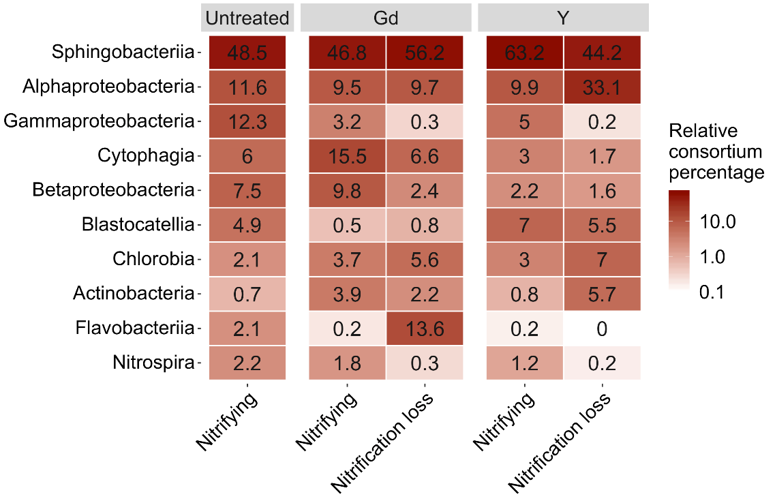
CMI scientists at Colorado School of Mines conducted this research.
Achievement:
Identification of shifts in microbial community and treatment performance caused by rare earth element addition to model wastewater treatment systems.
Significance and impact:
- Above certain concentration thresholds, Y and Gd induce significant changes to wastewater-relevant microbial communities
- These shifts can result in a negative impact to wastewater treatment performance
Details:
- Bench-scale aerobic bioreactors were seeded with activated sludge from a local wastewater treatment facility and maintained under stable dissolved oxygen and pH conditions
- Bioreactors fed synthetic wastewater spiked with varying concentrations of Gd or Y
- Nitrification shut down in reactors treated with 50 ppm Gd or Y
Next steps:
- Literature search into functional roles of differentially abundant microorganisms upon REE treatment
- Metagenomics to identify genes involved in wastewater treatment that are differentially abundant
